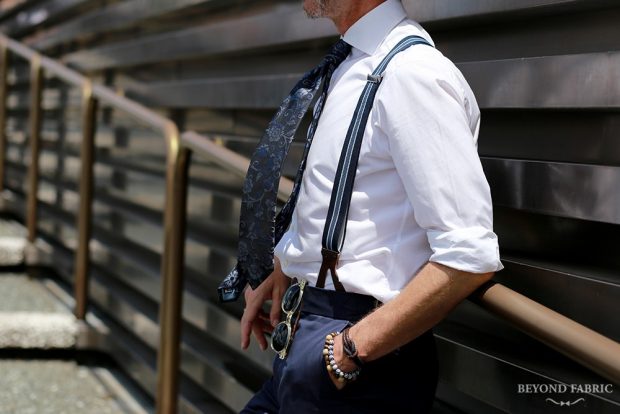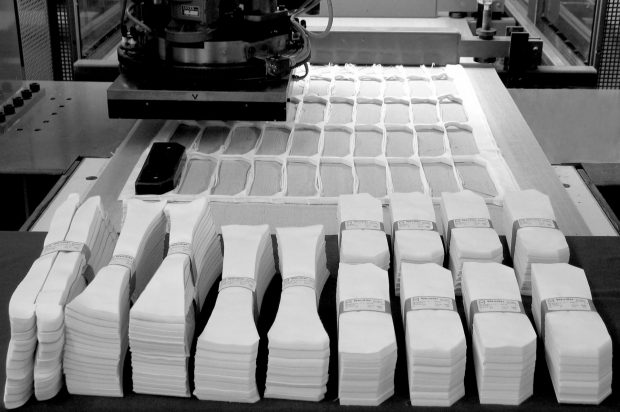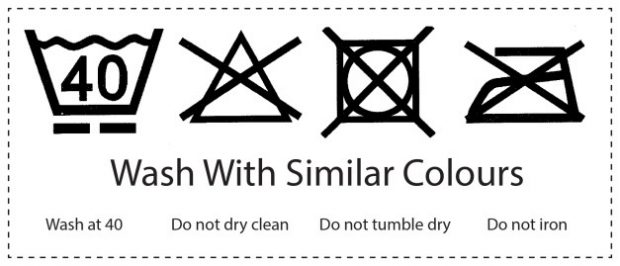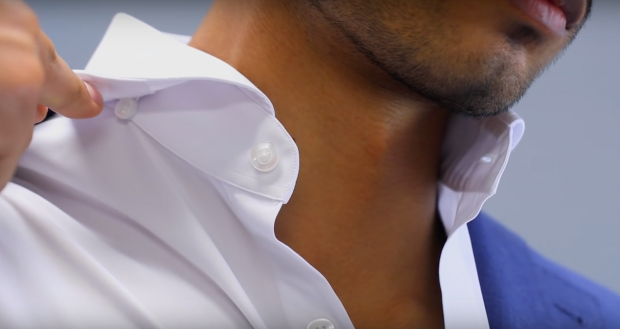Collar Stance & How To Keep Your Dress Shirt Collars Looking Crisp
The dress shirt remains the anchor in men’s attire, seamlessly adjusting to an array of styles and ambiances. More so, men finally recognize the importance of keeping their dress shirt collars looking crisp, and are making a conscious effort at it.
This isn’t to say their choices are accurate and informed on this chapter. One of the most common mistakes men incur when sporting dress shirts (besides fit that is), has to be droopy collars resulting from low quality fabrics, poor construction and improper care.
With the collar embodying a great deal of the shirt’s essence, there are countless ways to improve its stance and stature resulting in an impeccable looking version.
But first, the issue needs to be heard in detail before a worthwhile solution can be crafted.

During warmer months and in professional environments, the shirt-only look is gaining more popularity.
What a crisp looking dress shirt collar should look like.
We’ve all seen unpolished shirt collars drowning below jacket lapels as if being pulled by the shoulders, broken and flattened to their full extent and ultimately allowing for a (un)healthy dose of manly chest.
Now, unless you’re purposely wearing a pajama-collared shirt also referred to as Cuban or Capri collar, that is definitely not the way a dress shirt should look like.
The reasons for such “shirticide” are numerous and can be traced upstream towards production or downstream towards a lack of active engagement in garment and personal image care.
In this article, we will review the most common causes for flat collars and provide a number of ways to make your shirt collar pop, be it on future purchases or the time-tested favorite in your closet.

No matter how good looking you are or how expensive your suit is, an ill-fitting collar just compromises the entire look.
Causes on the manufacturing side that affect collar stance.
Dress shirts are easily one of the most intricate clothing items when it comes to industrial or semi-industrial manufacturing.
The research needed to reach the perfect design and cut, involves a number of individual processes and elements all of which will bear an impact on the final outcome of a dress shirt.
Focusing solely on the collar, and similarly to a sculpture, the sheer design and proportions directly influence how it will stand or drop.
In fact, besides the collar shape and design, there are other elements that bear an influence, namely:
The collar’s fabric.
As the “raw material” of the shirt, fabric plays an important role. Depending on its weight and texture, the collar will be more stiff or floppy.
The collar’s interlining — sewn or fused.
Dress shirt interlinings are placed in between layers of fabric to provide structure and support. They are directly linked to the fabric choice, since matching them correctly results in the perfect mix of aesthetics and comfort.
The construction of the collar.
The way a shirt is assembled, by hand or machinery also affects the way the collar will look. On this note, the use of metal molds to steam-press the collars allows them to retain their shape throughout their life cycle.
Furthermore, the way the collar stands is not only dependent on the collar itself, but on the front placket as well. In fact, when worn unbuttoned, the support structure of the collar is the placket, a soft element that usually falls out of place with movement, opening to the sides and pulling the collar along.
Causes on the consumer side which affect collar stance.
Besides the innate characteristics of the shirt, the remaining reasons for a floppy collar are often associated with how we, as consumers, wear and care for our own shirts.
We often overlook the fact that no matter its weight or casual essence, cottons and linens are delicate natural fibers, which demands basic maintenance and care, so be sure to consider the following:
Properly caring for your dress shirts.
Washing and ironing are the most hazardous operations for dress shirts. Abrasive soaps and softeners, overly intensive washing cycles, tumble driers and high-heated irons break the collars interlinings and contribute to fraying.
Taking your shirt to the dry cleaners isn’t the magical answer. Many of them don’t respect garments and resort to low quality detergents – be sure to choose the best one available and if in doubt, your tailor might provide a good recommendation.
Poor storing solutions also degrade the collar shape. Piling folded shirts on top of each other will tend to flatten collars and crease the shirt. If possible, hang your shirts on a proper hanger (space-permitting) and button the collar and the top two buttons on the placket.
Solutions to prevent collar droop and keep them looking crisp.
Using the highest quality of interlinings as well as a number of customizable options can help keep collars looking crisp. For example, opt for a lowered collar line that gives the collar the right angle.
Another custom feature to employ are hidden buttons on the sides to keep the collar upright and kept. Using collar stays further adds stiffness to the collar, improving overall stance.
The combination of these factors result in a nicely kept shirt collar that immediately elevates the entire ensemble, making it look more polished and luxurious.
Other options include balancing the height of the collar-band with the length of the collar points, or opting for a classic hidden button-down.
The importance of the front placket can’t be overlooked, as a distressed placket completely ruins any attempts on elegance, compromising the drape of the collar itself. Some shirts feature a reinforced placket, thereby able to hold their shape much better.
And if you are willing to compromise slightly on the comfort, an additional layer of interlining on the placket will make it even sturdier.
Upgrading existing dress shirt collars.
If you wish to maintain a soft placket on future orders or revamp the shape of an old favorite, there are a few interesting products on the market, such as Million Dollar Collar – a set of plastic placket reinforcements, easily sewn on by your tailor or seamstress to make your shirt look crisp.
Follow these tips when customizing your dress shirts to ensure they look their best. And save your old ones from extinction by taking the simple steps covered above.





